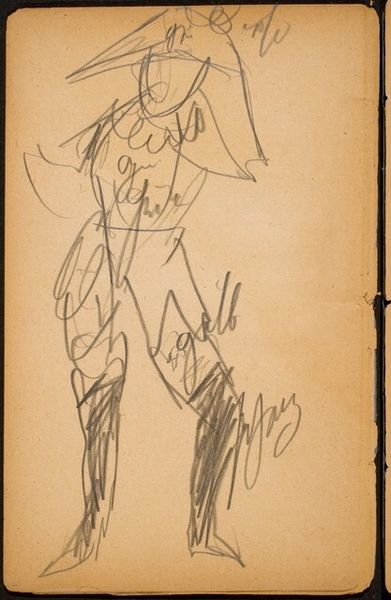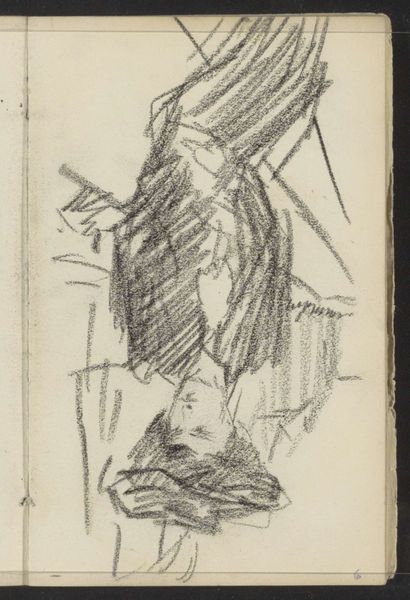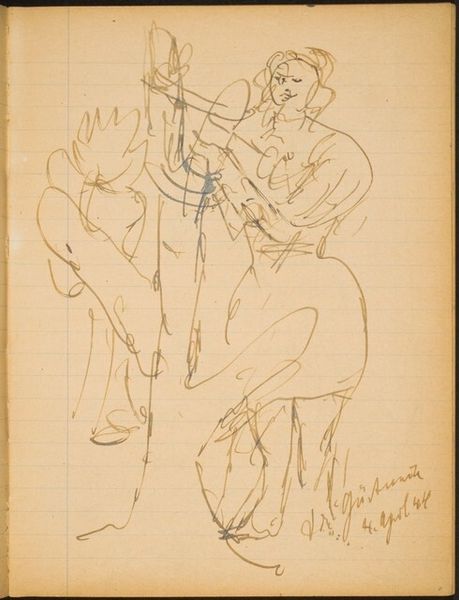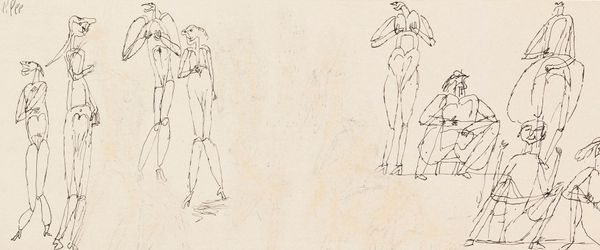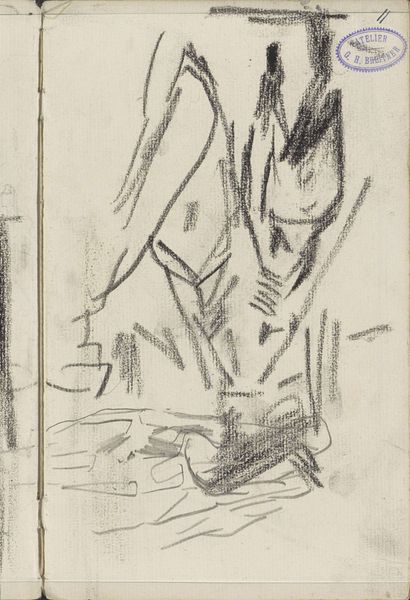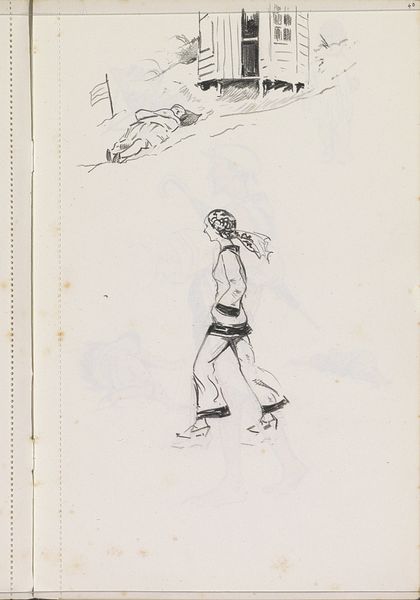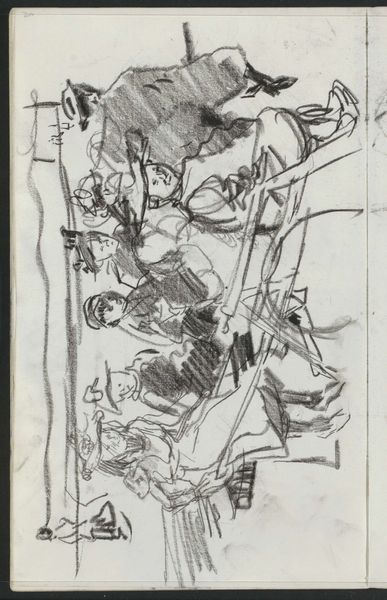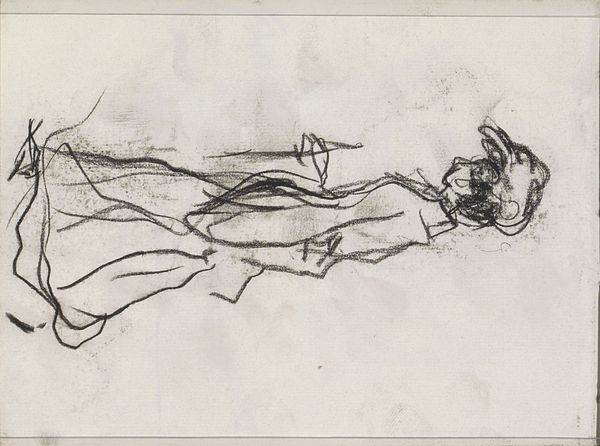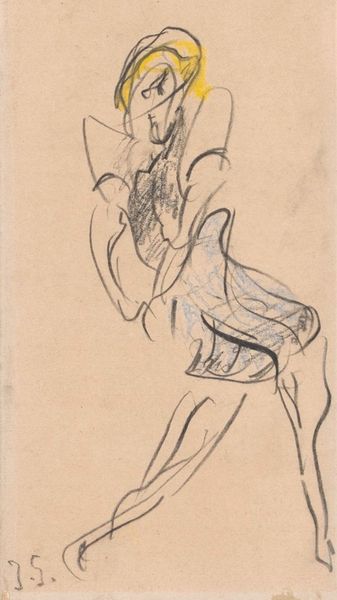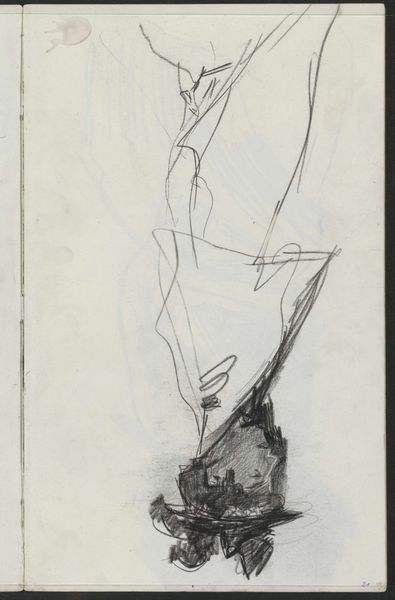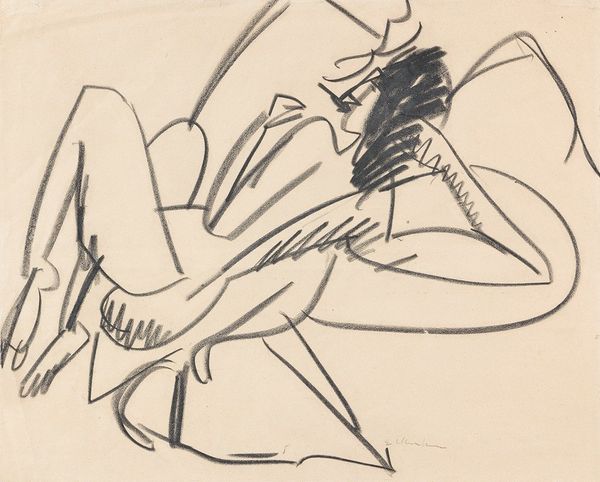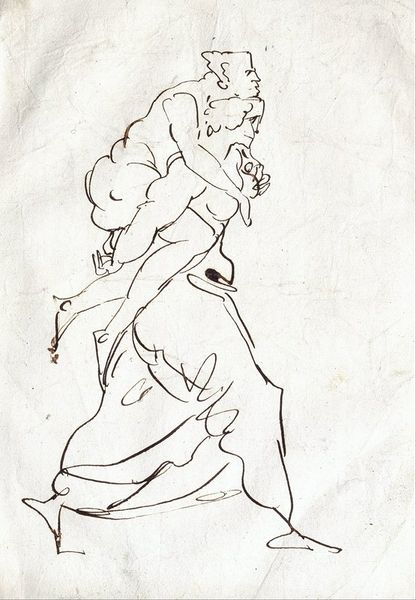
drawing, paper, ink, pen
#
drawing
#
pen sketch
#
figuration
#
paper
#
ink
#
expressionism
#
pen
Copyright: Public Domain: Artvee
Curator: Before us we have "Two Dancers with a Cat," an ink on paper drawing created by Ernst Ludwig Kirchner in 1913. It captures a scene imbued with the energy and visual shorthand emblematic of Expressionism. What are your initial impressions? Editor: Stark. The thin paper has this kraft paper, industrial feel to it. The rapid strokes are aggressive, lending a frenetic quality to the figures. It's immediately compelling as a physical object. Curator: Indeed. Note how the figures are delineated. Kirchner uses line not just to define the forms but to actively construct them. The dancers' bodies, though seemingly spontaneous, are carefully built with angular facets and deliberate weighting. It speaks volumes about the structured formalism underpinning even the wildest Expressionist impulse. Editor: And those aggressive marks seem incredibly raw, unrefined even. The process seems so exposed! Kirchner clearly wants us to see how he is putting the image together. I keep wondering: how many other sheets of paper did he crumple and toss before landing on this iteration? Curator: That very roughness you point to actually reinforces the thematic undercurrents. It echoes the fractured experience of modernity itself, doesn't it? The rapid strokes and fragmented forms aren't simply arbitrary—they're deliberate evocations of urban life, a sense of alienation. Editor: I see your point, but there's also an element of sheer labor involved that often gets overlooked in discussions of high art. Ink wasn’t some rare, precious medium. It was utilitarian, accessible. So in this context, Kirchner using something so commonplace says so much. The means of making this feel incredibly vital to its overall power. Curator: Perhaps. But doesn't the stark simplicity also call attention to the reduction of form— the reduction of the human body— to its basic architecture of angles? Consider, too, the spatial arrangement; the figures are placed in a shallow space, heightening the sense of compression and immediacy. Editor: It’s more about accessing the ready to hand isn’t it? Reaching for what’s immediately available and pushing against boundaries through the pure, distilled act of making. The figures emerging out of these quick strokes is captivating. Curator: A compelling reading, nonetheless. This piece reveals how seemingly informal compositions were meticulously considered studies of line and form in expressing urban sensibility. Editor: And by considering the piece's making and materiality, it also reveals its connections to everyday craft traditions. Thanks for your insights!
Comments
No comments
Be the first to comment and join the conversation on the ultimate creative platform.
